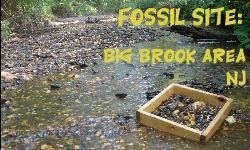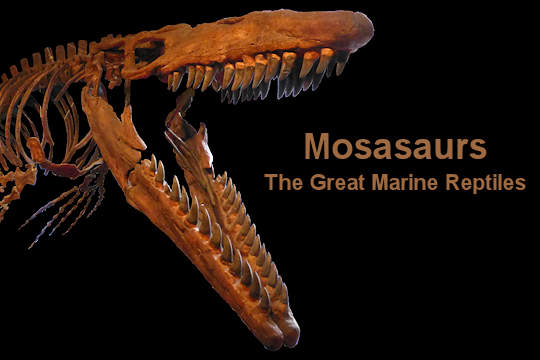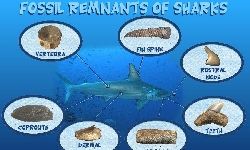Avocational Paleontology

A fossil vertebra from Cretasquatina americana - the northern most occurence of a new genus and species of Cretaceous angel shark - found at the Big Brook site in NJ. This specimen was 'rediscovered' online by a Paleontologist, donated to the AMNH, and published in a research paper.
The Importance of Amateurs in the Field of Paleontology: A Personal Example
A New genus and Species of Angel Shark (Cretasquatina americana)
Article written by: Jayson Kowinsky - Fossilguy.com
While professional paleontologists often do not have time to scour formations for important fossils, avocational collectors have the time and passion to do so. As a result, many scientifically important finds are made by avocational fossil collectors and donated to institutions for research.
Because avocational collectors find many of the fossils, it's important for them to share their finds and donate scientifically important specimens to appropriate museums and institutions. Sometimes avocational collectors don't know a find is important until someone else sees it. Therefore, sharing possible important finds by posting them on online message groups, myFOSSIL, and other platforms is a great way to let other people (including paleontologists) see the fossils.
I recently had a personal example on the importance of avocational finds and the importance of sharing fossils online. Dr. John Maisey, Curator Emeritus at the American Museum of Natural History, saw an unusual shark vertebra I found at Big Brook, NJ via my fossilguy.com site. He contacted me and explained how some unusual characteristics lead him to believe it may be an entirely new Genus and Species of Cretaceous Angel Shark that he was researching, he called it Cretasquatina americana. I promptly made a cast for myself and donated the original specimen to the AMNH for his research (Paper Here). Dr. Maisey was also kind enough to answer some interview questions about the fossil and the importance of amateurs in the field of paleontology. Below is his interview:
The Interview with Dr. Maisey
1. Dr. Maisey, can you tell us a little about where you work and your particular research area?
I worked at the American Museum of Natural History for almost 40 years until I retired in June 2018.
My position there was Curator in the Department of Vertebrate Paleontology. I am now Curator Emeritus.
I have two major research areas (and I continue to be active in both):
A. The fossil record of shark-like fishes (chondrichthyans) and the evolution of shark calcified cartilage.
B. Early Cretaceous fishes of South America (especially Brazil; I am currently collaborating with colleagues there on the distribution of fossil fishes among sedimentary basins, looking for links with tectonic history during the time when South America separated from Africa).
2. You are using the angel shark vertebra (Cretasquatina americana) that I found in your current research. Can you tell us
a little about it and why it's important for your research?
I noticed from your website that you found a vertebra with similar features to a Cretaceous angel shark from Alabama, which will become the 'type' of a new genus I am describing. The morphology is different from modern Squatina and fossils referred to Squatina or Pseudorhina. Your vertebra from New Jersey suggests that this genus was fairly widespread in North America.
3. Why do you think it's important for amateurs to contribute specimens to museums?
It's more than important; it is sometimes crucial. Amateurs/avocational collectors sometimes find really interesting specimens, but may not realize the importance of their discoveries unless they show somebody at a museum or university.
4. What is the importance of amateur contributions to the field of Paleontology?
It can be very important. Paleontology has a long history of collaboration between professionals and amateurs. Some 'amateur' (I prefer the term 'avocational') collectors make strong independent contributions to our science, in some cases even publishing the results of their work in peer-reviewed scientific journals (Jerry Case is a good example).
5. How has your research been impacted by amateur contributions?
I've experienced several instances where avocational collectors have discovered important fossils worth describing.
A few years ago, collectors in Texas found some bits of Pennsylvanian shark cartilages that turned out to be parts of the biggest Paleozoic shark so far discovered (easily as large as some of the Cretaceous 'mega-toothed' lamniforms). We described them in the Journal of Vertebrate Paleontology.
Another collector found an interesting Miocene stingray tooth plate that had been damaged and repaired (still waiting to describe that!). Yet another amateur found an amazing number of Early Cretaceous fossil fishes in Venezuela, which he donated to a local university there. They are very important because they are similar to Cretaceous fishes from Brazil.
6. Finally, do you have any advice to amateur/avocational fossil hunters?
Don't be shy about asking for help in identifying something you don't recognize. It may be important.
Posting photos on websites can be a great way to reach a wider audience, and helps the research community identify specimens with potential scientific interest. If it is an important discovery, enjoy the moment, but remember it has no scientific value if it ends up sitting on a shelf in your house (and one day your kids will probably toss it out)! Why not give it to a museum so it can be seen and studied by others (and perhaps even described)?
The Journal Article is Freely Available Here:
John G. Maisey, Dana J. Ehret, and John S.S. Denton "A New Genus of Late Cretaceous Angel Shark (Elasmobranchii; Squatinidae), with Comments on Squatinid Phylogeny," American Museum Novitates 2020(3954), 1-29, (16 June 2020). doi.org/10.1206/3954.1 Article Link

Figure 5 from Maisey et al. 2020 showing the new Genus and Species of Angel shark I found at Big Brook.

The Cretasquatina Americana Angel Shark Fossil Vertebra from Big Brook, New Jersey

The author making a cast of the fossil before donating it to the AMNH.

Research paper with the fossil Angel Shark Vertebra
Recommended Books for New Jersey Fossils and Paleontology:
When Dinosaurs Roamed New Jersey
by William B. Gallagher, 1997
Thisis a great book to learn about New Jersey Paleontology and the geologic history of New Jersey. It is very accurate, as the author is a scholar in the field of paleontology. There is even a section that describes fossil hunting sites in New Jersey.
101 American Fossil Sites You've Gotta See
By Albert B Dickas, 2018
This is a great updated fossil sites book with at least one fossil site in each state. Each site is broken into 2 pages. One has detailed information, such as directions, GPS coordinates, formation information, etc... The other is dedicated to images of the site and the fossils found there.
It also gives information on fossil 'viewing' sites such as dinosaur trackways, museums, and active excavations.
This book is great for both beginning and expert fossil collectors. Beginners will find fossil hunting much easier with this book and experts will find it to be a great reference.
Plus, my fossil photos are peppered throughout this book!









